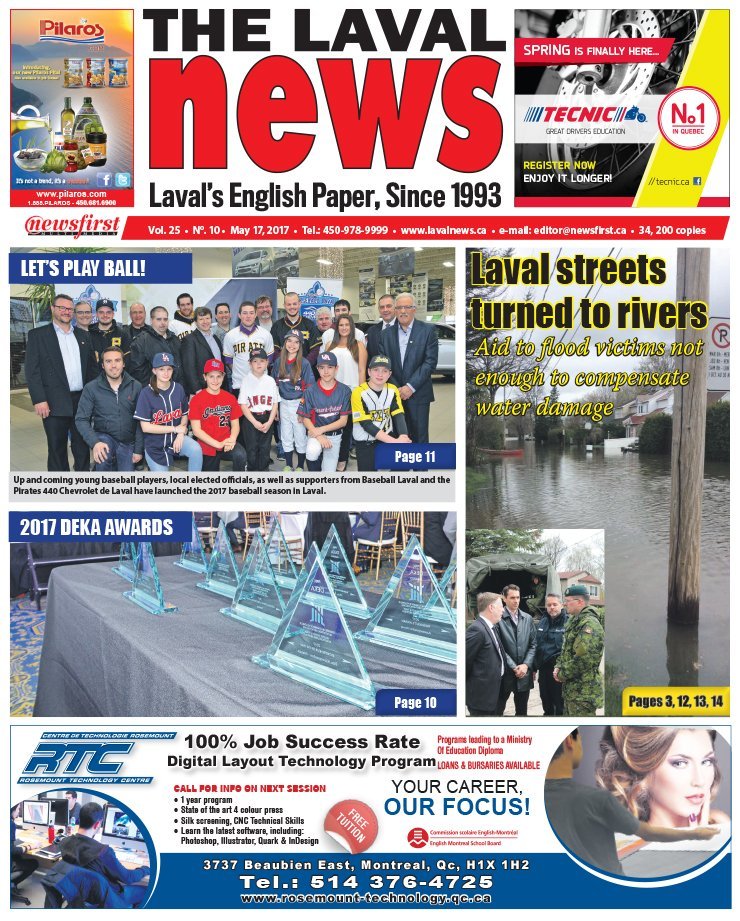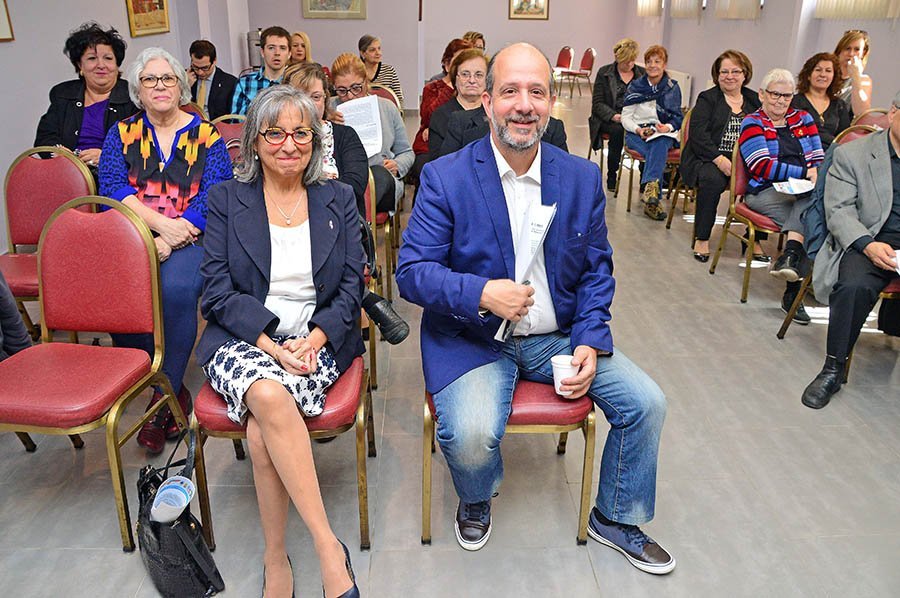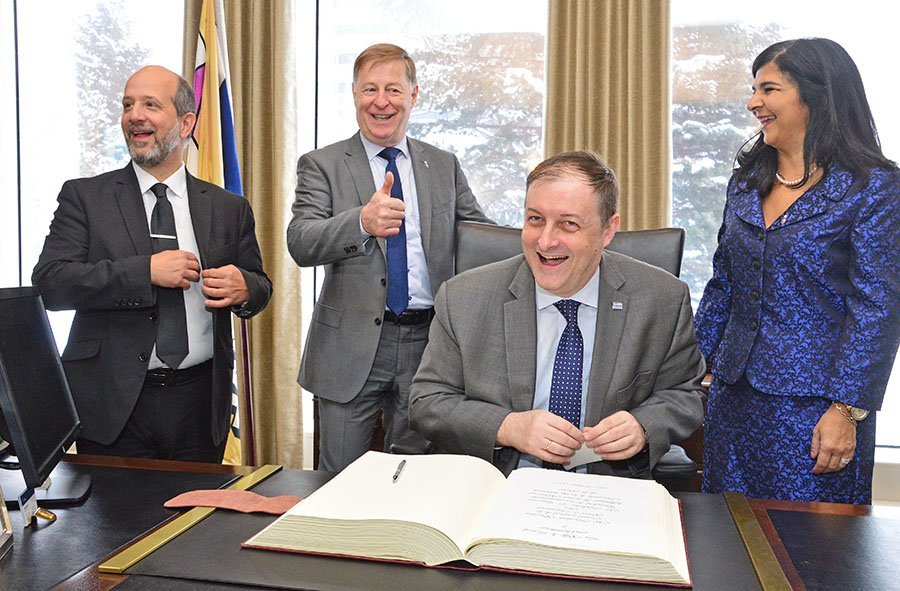Species known to invade homes in Canada include the carpenter ant, the little black ant, the odorous house ant, the thief ant, and the pharaoh ant. While some of them can sting, most of them are not aggressive. However, carpenter ants are well known for their ability to damage wooden structures and they can become a nuisance.
Here are some tips to find carpenter ants:
- Completely inspect areas of high moisture, wood in contact with the soil, areas where ventilation is poor, and exposed structural lumber.
- Figure out if there is actually an infestation of carpenter ants or if it is just individual ants wandering in the house. Look for a high concentration of ants in a particular area like under the kitchen sink.
- Pay attention to foraging ants and the patterns of their movement. For example, there may be a trail communicating with a parent colony outside. (Note: ants are most active after sunset.)
- Notice if there are swarms of winged ants trying to escape to the outdoors, usually in the spring.
- Look for piles of sawdust-like borings outside galleries dug by ants.
- Listen for the sound of an active colony, which will create a dry rustling noise that can be heard best at night during high ant activity and quiet time in the house. Use a wine glass or stethoscope to listen to the walls.
Ants
What are they?
Ants are tiny insects and may be black, brown, red, or yellow. Adult ants range in size from as small as 1 millimetre (1/16 to 1/32 inch), like little black ants and thief ants, to as large as 13 millimetres (1/2 inch), like carpenter ants.
Should I be concerned?
Most ants commonly found in Canada are not aggressive, although some can sting. Ants should be tolerated as much as possible since they cause little damage in the garden. They can even be considered beneficial because they eat other insects like young silverfish and moths.
Species known to invade homes in Canada include the carpenter ant, the little black ant, the odorous house ant, the thief ant, and the pharaoh ant. Pavement ants can become a nuisance in lawns, gardens, and pathways, as well as indoors.
Carpenter ants are larger than other species, although the sizes of the workers vary. They can cause structural damage to homes as they destroy wood to make room for their nests. Piles of sawdust may mean you have carpenter ants.
How can I get rid of ants?
Prevention
Ant colonies send out scouts to search for food. Ants are attracted to many types of food. They enjoy eating sugary and greasy foods (like peanut butter or crumbs) and are also attracted to the “honeydew” produced by aphids on infested houseplants. A successful scout leaves a scented trail for other workers to follow back to the food source.
Removing access to food and water is the easiest way to avoid pest problems:
- Store ant-attractive foods in glass jars with rubber gaskets, or in plastic containers with lids that snap tight.
- Keep kitchen countertops clean. Sweep or vacuum the floor often, especially around pet dishes.
- Rinse containers before putting them in the garbage or in recycling bins.
- Empty kitchen garbage containers often.
- Place composters at a reasonable distance from your house.
- Place pet food dishes in a shallow dish of water. Ants can’t swim, so they won’t be able to get at your pet’s food.
Physical control
- Repair and seal as many visible cracks in the foundation and exterior walls of your house as possible.
- Indoors, caulk along baseboards, cracks, and crevices to keep ants from passing through your house. If needed, use duct tape or petroleum jelly to temporarily seal cracks.
- Ants will not cross sticky barriers. Try placing two-sided tape around the legs of plant stands.
- Flood ant nests repeatedly with a garden hose to encourage the ants to move farther away from your house.
- Pour boiling water and detergent down the nest to temporarily reduce the population of a colony.
Non-chemical products
- Diatomaceous earth can be placed in cracks and crevices as a non-chemical means of control. This powder is made up of crushed microscopic marine fossils that scratch the outer “skin” of ants, causing them to dehydrate and die. Diatomaceous earth will remain active as long as it is kept dry. It is non-toxic to humans and pets, but be careful not to inhale the dust when applying this product.
- Natural gum resins can be applied around the base of trees and vines.
Important!
If you use a pesticide to control your pest problem, read the label to make sure you are choosing the right product for the right pest. Follow all label directions and warnings carefully. Always look for a Pest Control Products (PCP) number on the label so you know the product has been approved by Health Canada. See Use pesticides safely for more information on using pesticides safely.
Many chemical products can be used by consumers to control ants:
- Chemicals, sprays, and dusts can be used effectively as barrier and nest treatments. Applying a chemical directly on the nest may eliminate colonies. Anthills show where the colony has built a nest, so look for anthills in your yard or follow the ant trails back to the nest. Nests located indoors in wall voids can be treated with dusts that can be puffed into the area.
- Chemical barrier treatments can be applied to baseboards or door and window frames to keep outdoor nesting species from searching for food indoors. Spraying indoors where trails have been noticed may cut off food and water sources for an indoor nest and encourage the colony to split into multiple new colonies. If the treatment seems to increase the number of ants, try using a bait system to control them.
Did you know?
Some provinces and municipalities have placed more restrictions on the use of certain approved lawn and garden pesticides. Please check with your city, province, or local lawn care centre for more information.
Bait systems
Ants gather food and bring it back to the nest to feed ant colony members. So a bait system must work slowly enough to allow the poison to be fed to all members of the nest. This is a highly effective way of getting rid of nests. Baits containing boric acid are generally of low toxicity to other animals.
- Place bait stations directly in the path of foraging ants, but out of the reach of children and pets. Ant trails are commonly found along baseboards, the carpet edge along walls, or along the edges and inside corners of cabinets.
- Use plenty of bait stations. Two different baits at the same time will give better results.
- Keep baits available for at least two weeks. Repeated bait applications may be needed.
- Do not use chemical sprays to kill ants while using a bait system, or the bait system will not work. Reapply the bait if needed.
Carpenter ants
What are they?
The red carpenter ant and the black carpenter ant are two of the most common types found in Canada. The red carpenter ant has a dark brownish-black body, with a reddish-brown upper body. The black carpenter ant is dark brownish-black all over.
Carpenter ants are from 6 to 25 mm (.24 to 1 inch) long. A carpenter ant’s body is divided into three segments, with a very slim waist separating the upper body and lower body. Their antennae are bent and in sections. Male and female adults have wings at mating time.
Should I be concerned?
Carpenter ants are well known for their ability to damage wooden structures. They are also a nuisance in homes as they search for food. Carpenter ants eat both plant and animal matter. Their natural food sources are insects, other small invertebrates, and sweet body fluids from aphids and other insects. Protein and sweet foods found in and around homes also provide food for foraging workers.
Carpenter ants build nests by burrowing into wood. They dig tunnels (called galleries) much longer than those created by termites. The wood is not eaten, but thrown from the nest as sawdust-like shavings.
Did you know?
Carpenter ants are sometimes confused with termites, but it is easy to tell the difference between them. The termite has straight antennae and a thick waist, and the carpenter ant has a very narrow waist and “elbowed” (bent) antennae. Termites are found only in certain areas in Canada.
Carpenter ants live in large colonies with hundreds of workers (all sterile females), several males and females that reproduce, and one or more queen. When part of an established colony goes into a nearby structure, it sometimes establishes a smaller satellite colony there. Some experts believe this is the main way carpenter ants invade houses.
How do I know if I have a problem?
Outdoors, carpenter ants are found in dead trunks of standing trees, stumps, or logs, or under fallen logs and stones. They can sometimes mine sound wood, but they usually choose a soft type, like pine.
Indoors, because they prefer moist, decaying wood, carpenter ants can signal a moisture problem, or wooden structures that are decaying. As well as tunnelling in the trim of buildings, wooden steps, and window sills, ant colonies can nest in houses without attacking structural timbers, using hollow spaces like wall voids, attic spaces, and hollow doors. They can even be found behind books in libraries, behind drawers in dressers and cabinets, and in styrofoam insulation.
Carpenter ants get into houses by several ways:
- windows
- holes in foundations
- heating ducts and air-conditioners
- power or telephone cables
- points where tree branches or other vegetation come in contact with the house
- wooden structures attached to houses (like porches and sheds)
- firewood brought into the house
To find carpenter ants:
- Completely inspect areas of high moisture, wood in contact with the soil, areas where ventilation is poor, and exposed structural lumber.
- Figure out if there is actually an infestation of carpenter ants or if it is just individual ants wandering in the house. Look for a high concentration of ants in a particular area like under the kitchen sink.
- Pay attention to foraging ants and the patterns of their movement. For example, there may be a trail communicating with a parent colony outside. (Note: ants are most active after sunset.)
- Notice if there are swarms of winged ants trying to escape to the outdoors, usually in the spring.
- Look for piles of sawdust-like borings outside their galleries and slit-like openings in woodwork.
- Listen for the sound of an active colony, which will create a dry rustling noise that can be heard best at night during high ant activity and quiet time in the house. Use a wine glass or stethoscope to listen to the walls.
How can I get rid of carpenter ants?
Physical control
- Clear away any decaying or infested wood from around buildings.
- Remove firewood from inside buildings and away from the sides of buildings.
- Do not bury stumps or other wood debris close to your house.
- Pay attention to the state of landscaping props (like decorative bark, retaining walls, and driftwood).
- Correct humidity problems in your home.
- Replace decaying or infested structural wood with sound material.
- Remove food sources to discourage ants from invading buildings.
- Keep food in sealed containers and regularly sweep up all crumbs and other food fragments.
- Keep your home clean to prevent re-infestation.
Products
Important!
If you use a pesticide to control your pest problem, read the label to make sure you are choosing the right product for the right pest. Follow all label directions and warnings carefully. Always look for a Pest Control Products (PCP) number on the label so you know the product has been approved by Health Canada. See Use pesticides safely for more information on using pesticides safely
Chemicals can help you eliminate existing nests and prevent new nests from forming. Chemical control works best when you use it along with physical control.
Once a colony is well established, you usually need to locate and treat the actual nest site for permanent or long-term control. In the case of a satellite colony, the parent colony should be located and destroyed for most effective control. In difficult situations, use a professional exterminator.
Various pesticide products for are available for homeowners, and can help reduce the number of ants infesting your house. If you plan to do an indoor application, check the product label to make sure it is registered for use inside your home. There are also several other commercial products available to professional pest control operators.
For commercial food processing or preparation, use products specifically labelled for these areas. Carefully follow all label directions and warnings. Remove or cover all food, packaging material, and utensils before treatment. Afterwards, wash all surfaces that may be in contact with food and rinse thoroughly with water before re-use.
Please note: When applying pesticides, you should leave any dead ant bodies where they are. Other scavenging ants will either eat or bring the dead ant back to the nest to feed the rest of the colony. In this way, the pesticide’s effect is passed on.
For more information on ants:
https://www.canada.ca/en/health-canada/services/pest-control-tips/ants.html



















